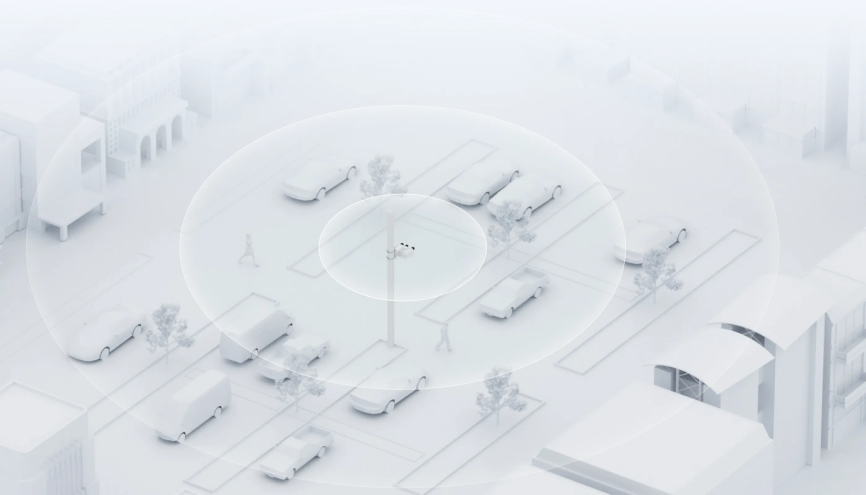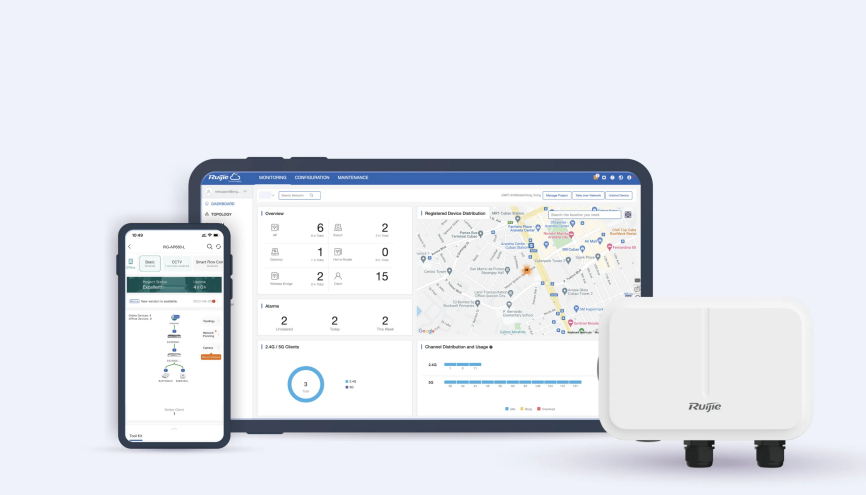Exterior Wireless Bridge is a device used to establish wireless network connections between buildings or distant locations. It is an effective solution for achieving long-distance wireless network connections at present, especially suitable for environments where wiring is difficult or where wireless networks need to be deployed quickly. Due to the stable performance of the Exterior Wireless Bridge, its support for customizable coverage distances, and various radio frequencies, it is highly adaptable for outdoor use and is very convenient to install. As a result, it is widely used in various scenarios such as farms, forests, factories, warehouses, scenic spots, and industrial parks. This article takes the application solution of the Exterior Wireless Bridge in urban public areas as an example to show you the unique advantages of this technology.

How to Deploy Exterior Wireless Bridges in Urban Public Areas?
The following are the steps and key points for coverage:
- Demand Assessment and Planning: First, it is necessary to evaluate the wireless coverage needs of urban public areas, including coverage range, user density, and data transmission requirements.
- Choosing the Right Equipment: Select appropriate wireless bridge devices based on the coverage range and environmental conditions. For example, the EnGenius™ EN series offers long-range outdoor AP/Bridges suitable for long-distance deployments.
- Installation and Configuration: The installation of the wireless bridge needs to consider its placement to ensure optimal signal coverage and transmission performance. TP-LINK’s wireless bridge setup guide includes point-to-point and point-to-multipoint networking modes, as well as instructions on accessing the AP interface for configuration.
- Network Parameter Settings: Configure the device name, IP address, subnet mask, and gateway of the wireless bridge to ensure compatibility with the existing network.
- Wireless Network Parameter Configuration: Set up the wireless network name (SSID), encryption method, and wireless password to ensure network security.
- Wireless Network Parameter Configuration: Set up the wireless network name (SSID), encryption method, and wireless password to ensure network security.
- Considering Environmental Factors: Since outdoor APs operate in harsh environments, it is necessary to consider the device's waterproof, dustproof, and temperature resistance capabilities.
- Considering Wireless Roaming: To achieve wireless roaming, all APs must have consistent SSID and security policy configurations.
- Data Transmission: For areas where wiring is inconvenient, high-performance wireless bridges or 4G modules can be used to achieve real-time transmission of monitoring data.
- Power Supply Solutions: In areas where power supply is not easily accessible, high-performance solar power systems can be used to power monitoring equipment.
- Compliance with Policies and Standards: Follow the local government’s implementation guidelines and construction standards for WLAN coverage in public areas to ensure regulatory compliance.
For standard projects, selecting vendors that offer full installation and maintenance services is key to implementing solutions. Vendors like Ruijie Reyee, recognized for their well-developed and customized solutions, are typically preferred. Additionally, Ruijie Reyee, as a leading choice in the industry, offers wireless bridge products with excellent performance in terms of waterproofing, dustproofing, and resistance to extreme temperatures. The equipment also supports cloud-based management, simplifying ongoing operations and making deployment and maintenance more efficient.

What Are the Benefits of Deploying Exterior Wireless Bridges in Urban Public Areas?
The Advantages of Using Exterior Wireless Bridges in Urban Public Areas Are Clear:
- Expanding Coverage: Wireless bridges can extend the coverage area of a wireless network, allowing stable wireless signals to reach places that were previously out of range.
- Enhancing Signal Strength: When building structures, interference, or other factors weaken the wireless signal, a wireless bridge can act as a relay to receive and amplify the signal before transmitting it to another area, effectively overcoming these issues.
- High Flexibility: Wireless bridging requires no additional wired connections, offering greater flexibility and convenience. Users can easily extend the network to new areas without damaging existing decor or undertaking complex cabling.
- Easy Installation: Wireless bridges are relatively easy to install and configure, requiring no wall-breaking or cabling. They can be deployed quickly, making them ideal for urban public areas that require fast service setup.
- Cost-Effective: For short-distance and small-scale network expansion, wireless bridges can save cabling costs, particularly in urban public areas that require extensive coverage but have limited budgets.
- Aesthetic Appeal: Wireless bridging eliminates the clutter of cables, resulting in a cleaner and more attractive setup, which is suitable for urban public areas with aesthetic requirements.
- Rapid Deployment: Wireless bridging networks can quickly establish communication links, providing temporary, emergency, or disaster communication, whereas wired connections take more time to set up.
- Improving Network Speed and Stability: By wirelessly bridging multiple routers, network speed and stability can be significantly improved, which is especially important for urban public areas that require high-speed and reliable connections.
- Interconnecting Multiple Wireless Networks and Sharing Resources: Wireless bridging can link two or more independent wireless networks, enabling communication and resource sharing between them, making file transfers, printer sharing, and other operations between networks more convenient in urban public areas.
Of course, at this stage, there are still some technical challenges in deploying Exterior Wireless Bridges in urban public areas, such as signal interference, device limitations, overly complex network configurations, and increasing extreme environmental conditions. These technical difficulties require continuous innovation and optimization of solutions to achieve more efficient, stable, and secure wireless network connections, posing challenges for both vendors and the industry.
Featured Articles
- Networking Tools for Retail Stores: The Core Value of Cloud-Managed APs












